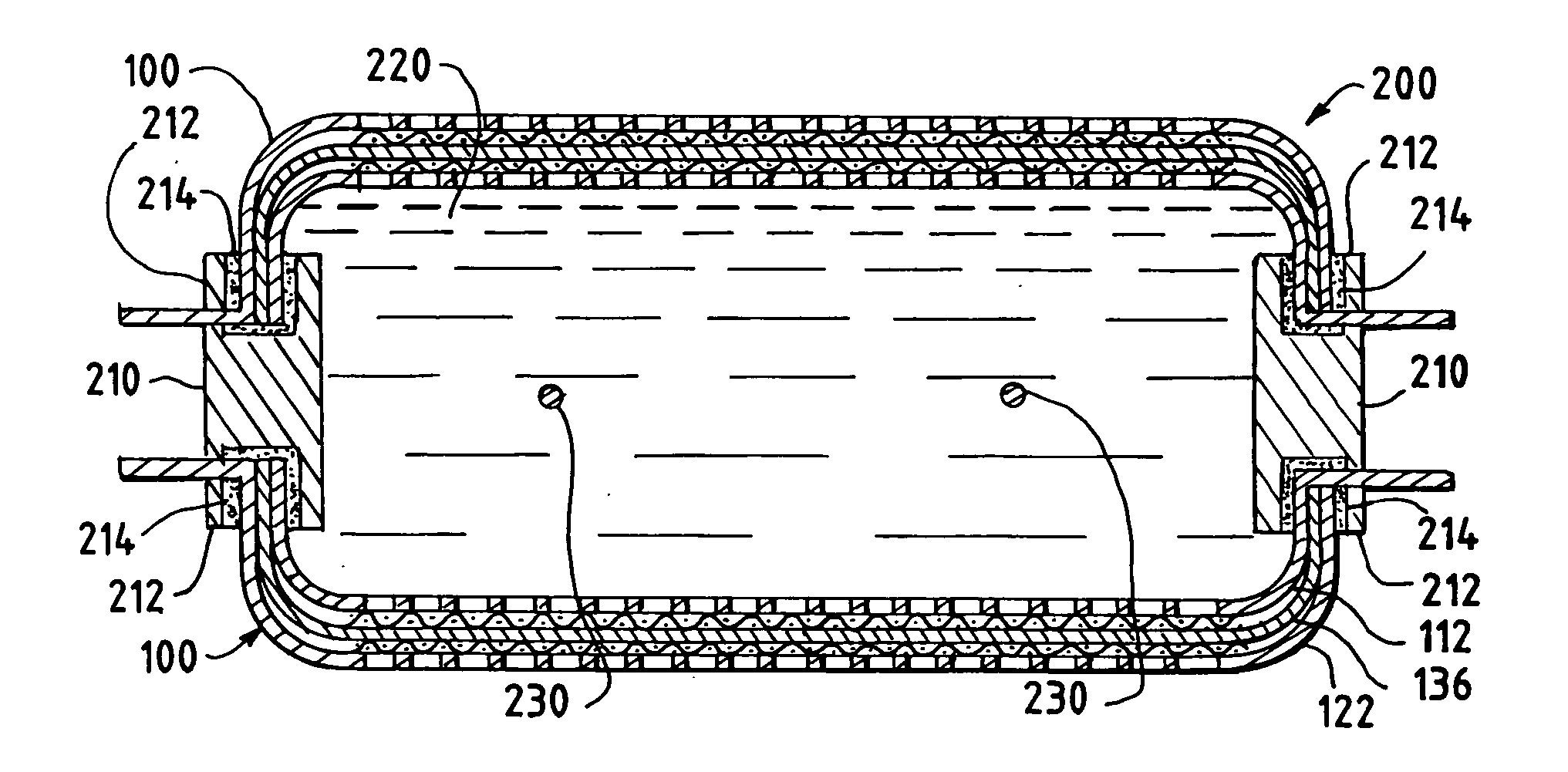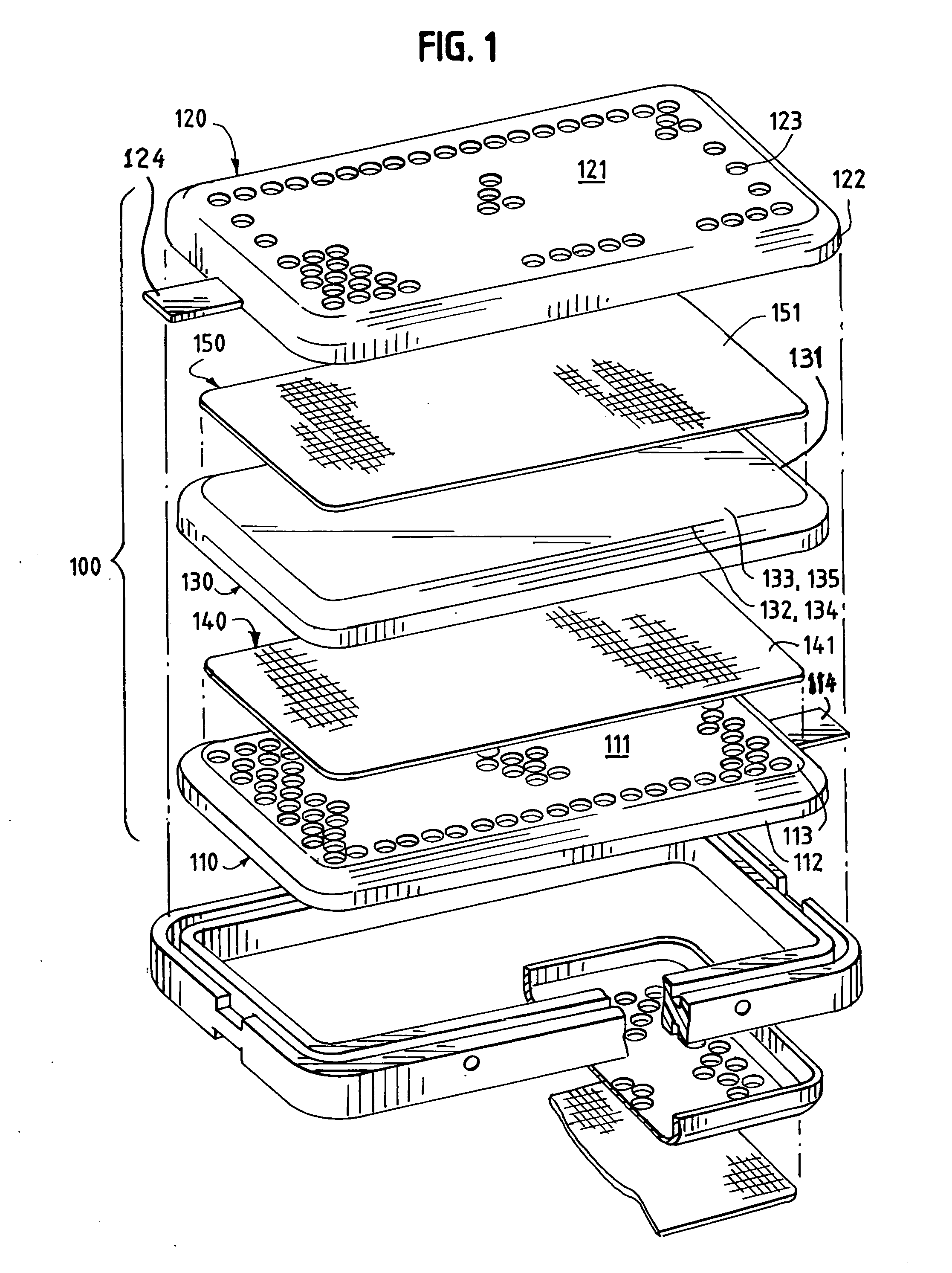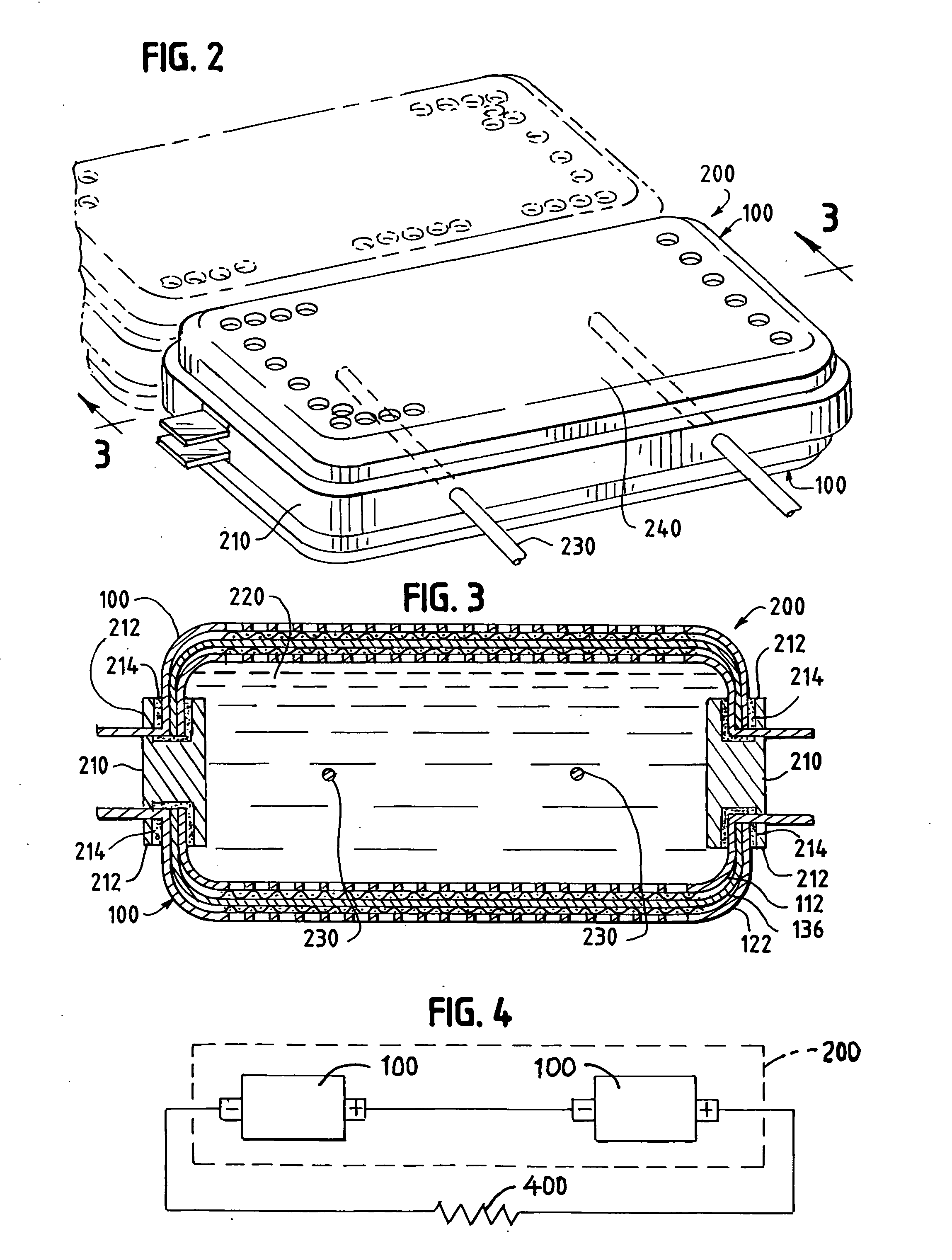Liquid feed fuel cell with nested sealing configuration
a fuel cell and liquid feed technology, applied in the field of electrochemical fuel cells, can solve the problems of increasing the size, weight, complexity and cost of hydrogen/oxygen fuel cell systems, and the least density of all possible fuels, and achieve the effect of facilitating fluid diffusion
- Summary
- Abstract
- Description
- Claims
- Application Information
AI Technical Summary
Benefits of technology
Problems solved by technology
Method used
Image
Examples
Embodiment Construction
)
[0027] Turning first to FIG. 1, a single direct liquid feed fuel cell 100 includes an anode current collector 110 cathode current collector 120. The anode current collector 110 is electrically conductive, and has a major planar portion 111 and an edge 112 that extends substantially perpendicularly from and substantially circumscribes the anode current collector major planar portion 111. Extending from the anode current collector edge 112 is an anode current collector electrical connection tab 114. The anode current collector electrical connection tab 114 facilitates connection of the fuel cell 100 in an electrical circuit as illustrated, by example, in FIG. 4. Of course, the anode current collector electrical connection tab 114 can be oriented so as to touch other parts of the anode current collector 110 because of the anode current collector's electrically conductive properties. The anode current collector major planar portion 111 has openings 113 formed therein that facilitate fl...
PUM
| Property | Measurement | Unit |
|---|---|---|
| voltage | aaaaa | aaaaa |
| electrically conductive | aaaaa | aaaaa |
| volume | aaaaa | aaaaa |
Abstract
Description
Claims
Application Information
 Login to View More
Login to View More - R&D
- Intellectual Property
- Life Sciences
- Materials
- Tech Scout
- Unparalleled Data Quality
- Higher Quality Content
- 60% Fewer Hallucinations
Browse by: Latest US Patents, China's latest patents, Technical Efficacy Thesaurus, Application Domain, Technology Topic, Popular Technical Reports.
© 2025 PatSnap. All rights reserved.Legal|Privacy policy|Modern Slavery Act Transparency Statement|Sitemap|About US| Contact US: help@patsnap.com



